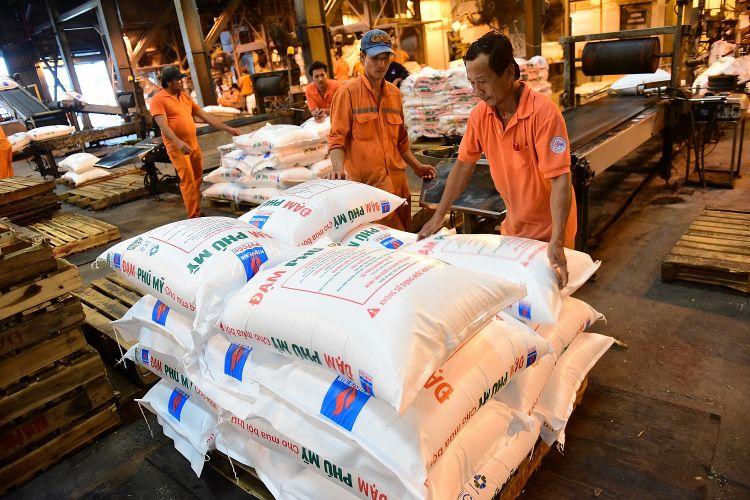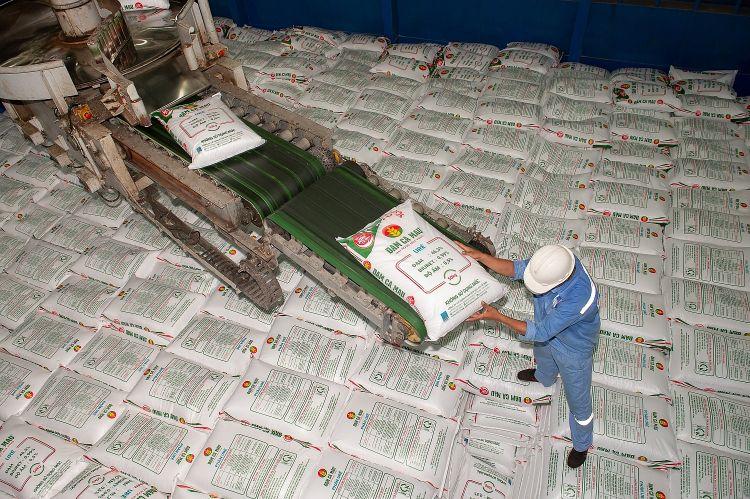Many blamed domestic enterprises for the sharp increase in domestic fertilizer prices. But that’s such a subjective statement, not taking into account that domestic enterprises are also making efforts to help out Vietnamese farmers and agriculture against global market fluctuations.
1. Currently, not just fertilizers, many basic goods, raw materials have increased in price across markets. The main reason is due to the negative impact of the Covid-19 pandemic that caused workshops, factories, and enterprises around the world to either close or operate at a small capacity. The pandemic also caused disruption to logistics chain, sudden surge in shipping costs, prices of many commodities, including fertilizers, which are mainly transported by containers, but according to calculations, the cost to hire shipping containers has increased 5 times compared to the previous years.
In particular, the increase in global fertilizer prices was mainly due to the galloping prices of raw materials, exceeding all forecasts. Accordingly, compared to the end of 2020, sulfur prices have increased by 133%, ammonia (NH3) by 130%, and sulfuric acid (H2SO4) by 500% in some areas.

The prices of domestically-produced fertilizers have increased but still lower than global standard. On the domestic market, the prices of domestic fertilizers are 1-2 million VND/ton lower than that of imported fertilizers.
Besides, the rapid implementation of Covid-19 vaccination by many countries has led to a strong demand for economic production recovery, especially in the Chinese and Central American markets. Since then, the prices of global fertilizers have spiked due to the increasing demand for agricultural production recovery.
In Vietnam, the prices of domestically-produced fertilizers have also increased significantly. This has made many people wonder, seeing that farmers are struggling because the prices of agricultural products are low and required “rescue”, yet the prices of fertilizers have increased?! Thus, someone shifts the blame onto domestic enterprises.
In fact, it is natural for one to have such mindset when taking into account the difficulties that farmers are facing, when prices of agricultural products plummeted, you have to sell cheap, or risk losing everything. Needless to say, perhaps we also need to have a fairer and more objective view of domestic enterprises.
2. In the first place, input costs and output income are two independent issues; one cannot be attributed to the other. Currently, due to the impact of the Covid-19 pandemic, trade has been interrupted, causing some agricultural products to plummet. But it is likely that when the pandemic passes, the demand for agricultural products will make a major comeback, leading to higher prices of agricultural products. This has nothing to do with input costs. Not to mention, according to the general assessment, the prices of agricultural products and the value of Vietnam's agricultural products are actually increasing, the prices of agricultural products only decreased in certain goods, while the main agricultural products are enjoying “good harvests, good price” trend.
Second, most raw materials for fertilizer production are bought at global prices, so when global prices of raw materials increase, domestic production costs also increase.

Domestic enterprises are trying to maximize output, dispatch goods to regions, quickly meeting demand of local farmers, thereby preventing shortages and price fevers.
Third, after decades of reform, Vietnam's economy now has a very high degree of integration with global economy. Every change in the global market causes an impact on the domestic economy under the butterfly effect. When the price of a certain common commodity, such as fertilizer, changes across global markets, its domestic price also changes immediately, following the principle of mutual exchange. This is the adjustment mechanism of the market to create a common price level around the world.
If the price of a commodity in Vietnam is higher or lower than its respective global price, it will immediately create a flow in which such commodity is transported from Vietnam to other regions, or from other regions to Vietnam until the general price equilibrium is restored.
Therefore, when global fertilizer prices took a steady increase recently or plummeted like a few years ago, fertilizer prices in Vietnam will change accordingly.
It is forecasted that in the coming time, domestic fertilizer prices will continue to increase in line with global price fluctuations. In such case, domestic enterprises can only partially restrain the general price increase.
3. Despite the increase in fertilizer prices, it must be recognized that the increase in domestic fertilizer prices is still less than the global standard. On the domestic market, the prices of domestic fertilizers are 1-2 million VND/ton lower than that of imported fertilizers.
Many large domestic fertilizer enterprises like Phu My Fertilizer, Ca Mau Fertilizer (under Vietnam Oil and Gas Group) have proactively suspended, reduced exports and activities in the international market to focus on providing supply for the domestic market. This meant that enterprises have proactively chosen to reduce part of its profits from exporting at higher prices to support local farmers.

Many large domestic fertilizer enterprises like Phu My Fertilizer, Ca Mau Fertilizer have proactively suspended, reduced exports and activities in the international market to focus on providing supply for the domestic market.
In addition, Domestic enterprises are trying to maximize output, dispatch goods to regions, quickly meeting demand of local farmers, thereby preventing shortages and price fevers. But to do that in this situation is not easy, domestic enterprises and factories have to stretch themselves on many fronts to realize the dual goals of battling the pandemic and carrying out business, production in an efficiency manner.
In order to ensure smooth production and business activities during the complicated development of the COVID-19 pandemic, at factories, production, operation teams must be "stationed" on-site, factory management, officers, engineers and employees are unable to go home, having to "self-quarantine" for a whole month, ensuring that the factory is operated continuously, safely, with quality assurance and enough output for harvest seasons. Such is the testament to the commitment and efforts of enterprises and workers in the fertilizer industry to the agriculture industry and local farmers!
These are typical examples of the implementation of the Party and State's policy on respecting market laws, minimizing the application of bias measures, and distorting the operation of market laws, causing adverse effects on the economy, at the same time implementing the Tam Nong policy of the Party and the State.
L.Truc